1. Shin MY, Kwun IS. Vitamin D: hormone-like nutrient. J Nutr Health. 2016; 49:1–7.
2. Park JH, Hong IY, Chung JW, Choi HS. Vitamin D status in South Korean population: seven-year trend from the KNHANES. Medicine (Baltimore). 2018; 97:e11032. PMID:
29952942.
3. Thuesen B, Husemoen L, Fenger M, Jakobsen J, Schwarz P, Toft U, Ovesen L, Jørgensen T, Linneberg A. Determinants of vitamin D status in a general population of Danish adults. Bone. 2012; 50:605–610. PMID:
22227435.
4. Holick MF. McCollum Award Lecture, 1994: vitamin D--new horizons for the 21st century. Am J Clin Nutr. 1994; 60:619–630. PMID:
8092101.
5. Cinar N, Harmanci A, Yildiz BO, Bayraktar M. Vitamin D status and seasonal changes in plasma concentrations of 25-hydroxyvitamin D in office workers in Ankara, Turkey. Eur J Intern Med. 2014; 25:197–201. PMID:
24268953.
6. Ministry of Health & Welfare (KR). The Korean Nutrition Society. Dietary Reference Intakes for Koreans 2020: Vitamin D. Seoul: The Korean Nutrition Society;2020.
8. Ministry of Food and Drug Safety (KR). Nutrition Facts of Eating-Out (2019). Cheongju: Ministry of Food and Drug Safety;2019.
9. Ministry of Food and Drug Safety (KR). Nutrition Facts of Eating-Out (2020). Cheongju: Ministry of Food and Drug Safety;2020.
10. Ministry of Food and Drug Safety (KR). Nutrition Facts of Processed Food (2019). Cheongju: Ministry of Food and Drug Safety;2019.
11. Ministry of Food and Drug Safety (KR). Nutrition Facts of Processed Food (2020). Cheongju: Ministry of Food and Drug Safety;2020.
12. Kim MY, Kim MJ, Ly SY. Vitamin D intake, serum 25OHD, and bone mineral density of Korean adults: based on the Korea National Health and Nutrition Examination Survey (KNHANES, 2011). J Nutr Health. 2016; 49:437–446.
13. GreenfieldS. SouthgateDA. Food Composition Data, Production, Management and Use. 2nd ed. Rome: FAO/INFOODS;2003.
15. Korea Disease Control and Prevention Agency. Development of Database of Vitamin D and Vitamin E for Korea National Health and Nutrition Examination Survey’s Data Processing. Cheongju: Korea Disease Control and Prevention Agency;2020.
16. Chinese Center for Disease Control and Prevention (CDC). Vegetable food. In: China Food Composition Tables Standard Edition. 6th ed. Beijing: Peking University Press;2019.
17. Chinese Center for Disease Control and Prevention (CDC). Animal food. China Food Composition Tables Standard Edition. 6th ed. Beijing: Peking University Press;2019.
19. US Department of Agriculture. FoodData Central [Internet]. Washington, D.C.: US Department of Agriculture;2020. cited 2020 October 10. Available from:
https://fdc.nal.usda.gov/Laboratory.
22. Tsuboyama-Kasaoka N, Takizawa A, Tsubota-Utsugi M, Nakade M, Imai E, Kondo A, Yoshida K, Okuda N, Nishi N, Takimoto H. Dietary intake of nutrients with adequate intake values in the dietary reference intakes for Japanese. J Nutr Sci Vitaminol (Tokyo). 2013; 59:584–595. PMID:
24477258.
23. Lee MS, Li HL, Hung TH, Chang HY, Yang FL, Wahlqvist ML. Vitamin D intake and its food sources in Taiwanese. Asia Pac J Clin Nutr. 2008; 17:397–407. PMID:
18818159.
24. González-Rodríguez LG, Estaire P, Peñas-Ruiz C, Ortega RM. UCM Research Group VALORNUT (920030). Vitamin D intake and dietary sources in a representative sample of Spanish adults. J Hum Nutr Diet. 2013; 26(Suppl 1):64–72. PMID:
23600788.
25. Calame W, Street L, Hulshof T. Vitamin D serum levels in the UK population, including a mathematical approach to evaluate the impact of vitamin D fortified ready-to-eat breakfast cereals: application of the NDNS database. Nutrients. 2020; 12:1868. PMID:
32585847.
26. Herrick KA, Storandt RJ, Afful J, Pfeiffer CM, Schleicher RL, Gahche JJ, Potischman N. Vitamin D status in the United States, 2011-2014. Am J Clin Nutr. 2019; 110:150–157. PMID:
31076739.
27. Calvo MS, Whiting SJ, Barton CN. Vitamin D fortification in the United States and Canada: current status and data needs. Am J Clin Nutr. 2004; 80:1710S–6S. PMID:
15585792.
28. Park HY, Lim YH, Park JB, Rhie J, Lee SJ. Environmental and occupation factors associated with vitamin D deficiency in Korean adults: The Korea National Health and Nutrition Examination Survey (KNHANES) 2010-2014. Int J Environ Res Public Health. 2020; 17:9166. PMID:
33302471.
29. Yu A, Kim J, Kwon O, Oh S, Kim J, Yang YJ. Association between serum 25-hydroxyvitamin D and consumption frequencies of vitamin D rich foods in Korean adults and older adults. Korean J Community Nutr. 2014; 19:122–132.
30. Shin YS, Choi BY, Kim MK, Yang YJ. Serum 25-hydroxyvitamin D and cognitive function in Korean older adults living in rural area. J Nutr Health. 2019; 52:465–474.
31. Yoon L, Yang J, Kweon S, Oh K. Dietary supplement intake based on the Korea national health and nutrition examination survey in 2015. Public Health Wkly Rep. 2015; 11:188–192.
32. Kim JM. Evaluation of nutritional status of vitamins and minerals according to consumption of dietary supplements in Korean adults and the elderly: report based on 2017 Korea National Health and Nutrition Examination Survey data. Korean J Community Nutr. 2020; 25:329–339.
33. Yu A, Kim J, Kwon O, Oh SY, Kim J, Yang YJ. The association between serum 25-hydroxyvitamin D concentration and consumption frequencies of vitamin D food sources in Korean adolescents. Clin Nutr Res. 2013; 2:107–114. PMID:
23908977.
34. Kalkwarf HJ, Khoury JC, Lanphear BP. Milk intake during childhood and adolescence, adult bone density, and osteoporotic fractures in US women. Am J Clin Nutr. 2003; 77:257–265. PMID:
12499350.
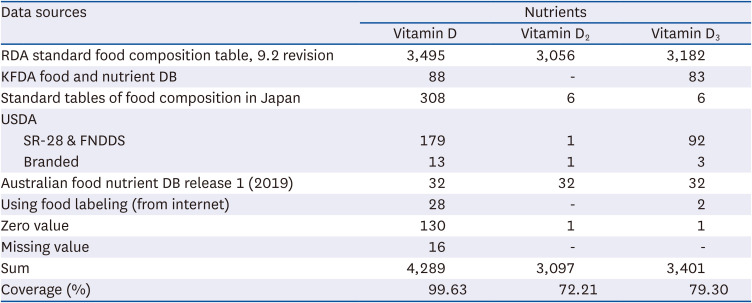
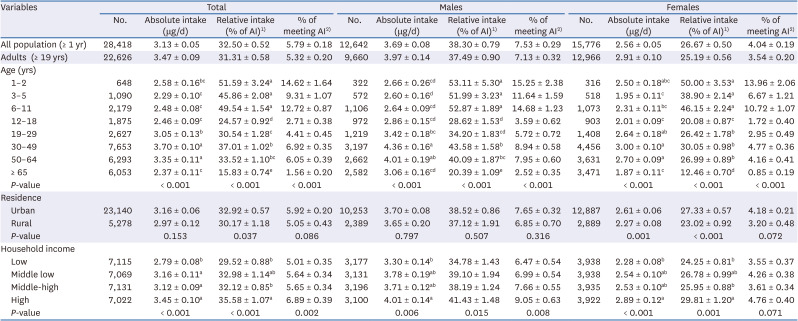
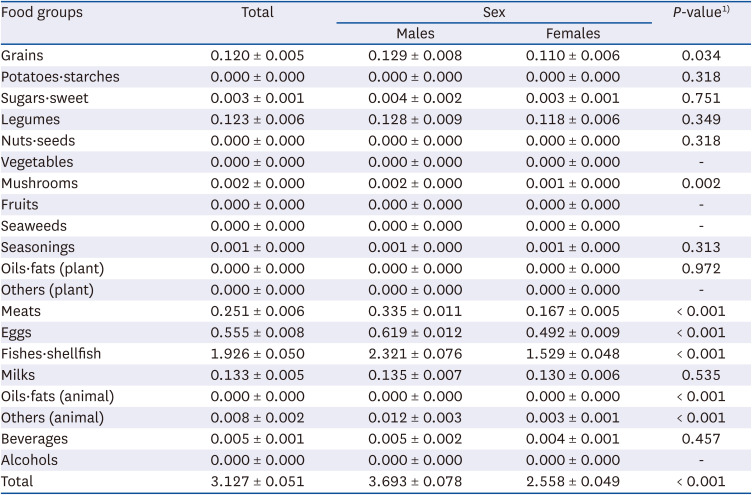
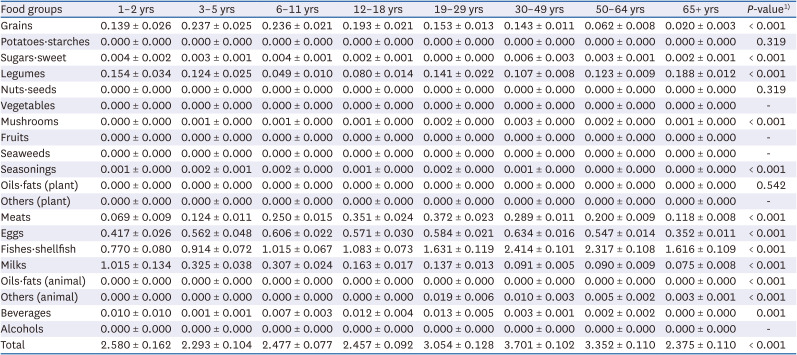

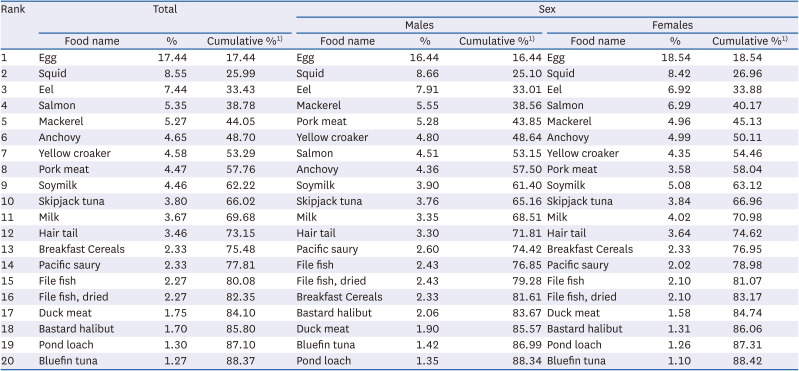
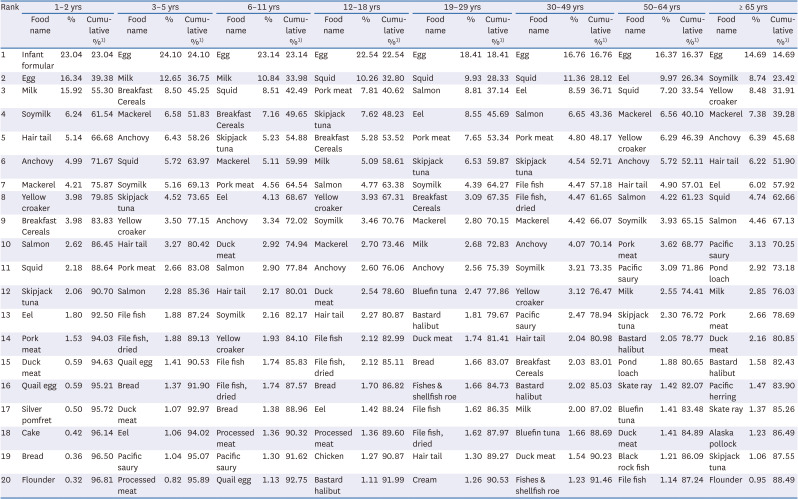




 PDF
PDF Citation
Citation Print
Print



 XML Download
XML Download